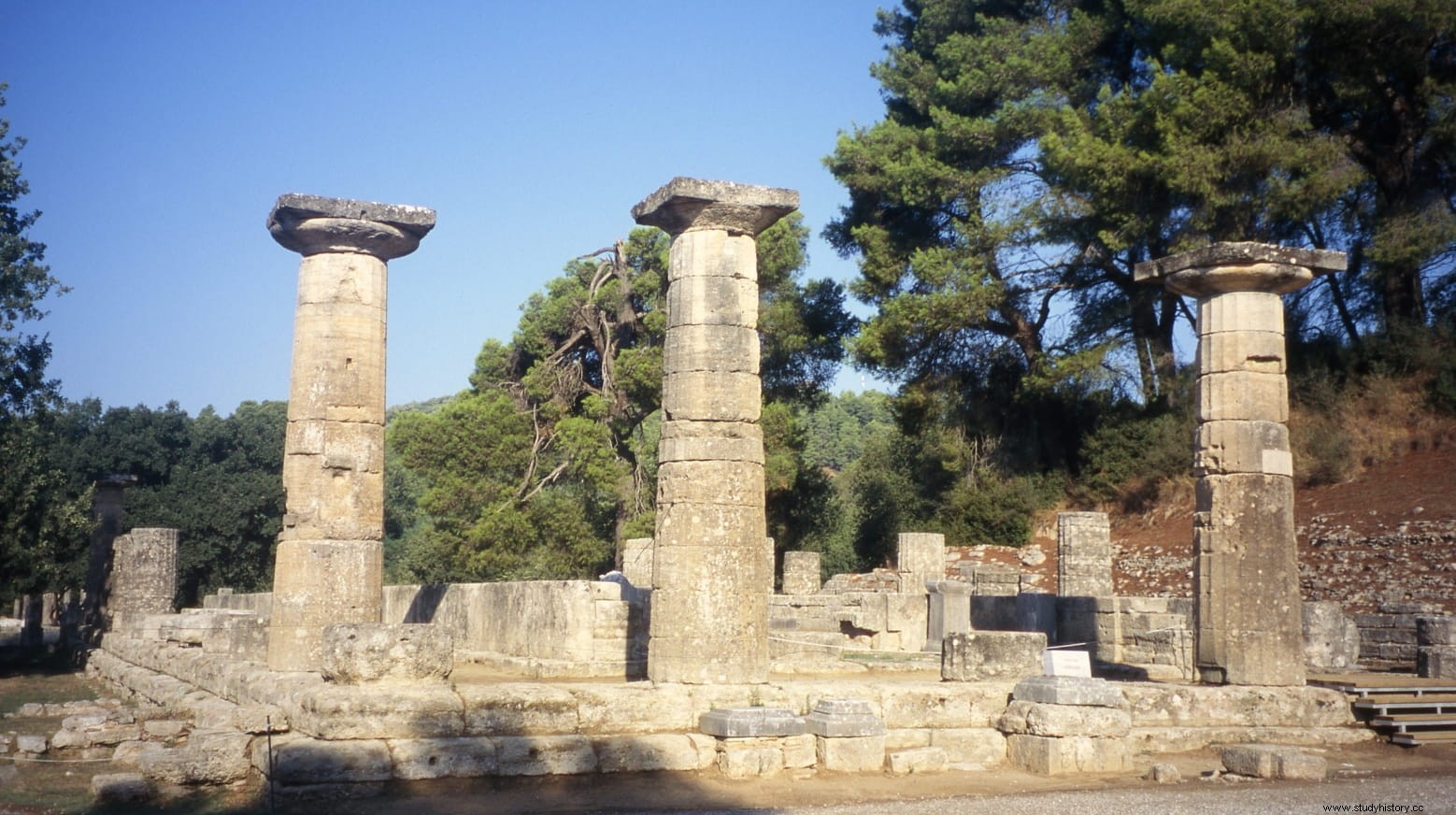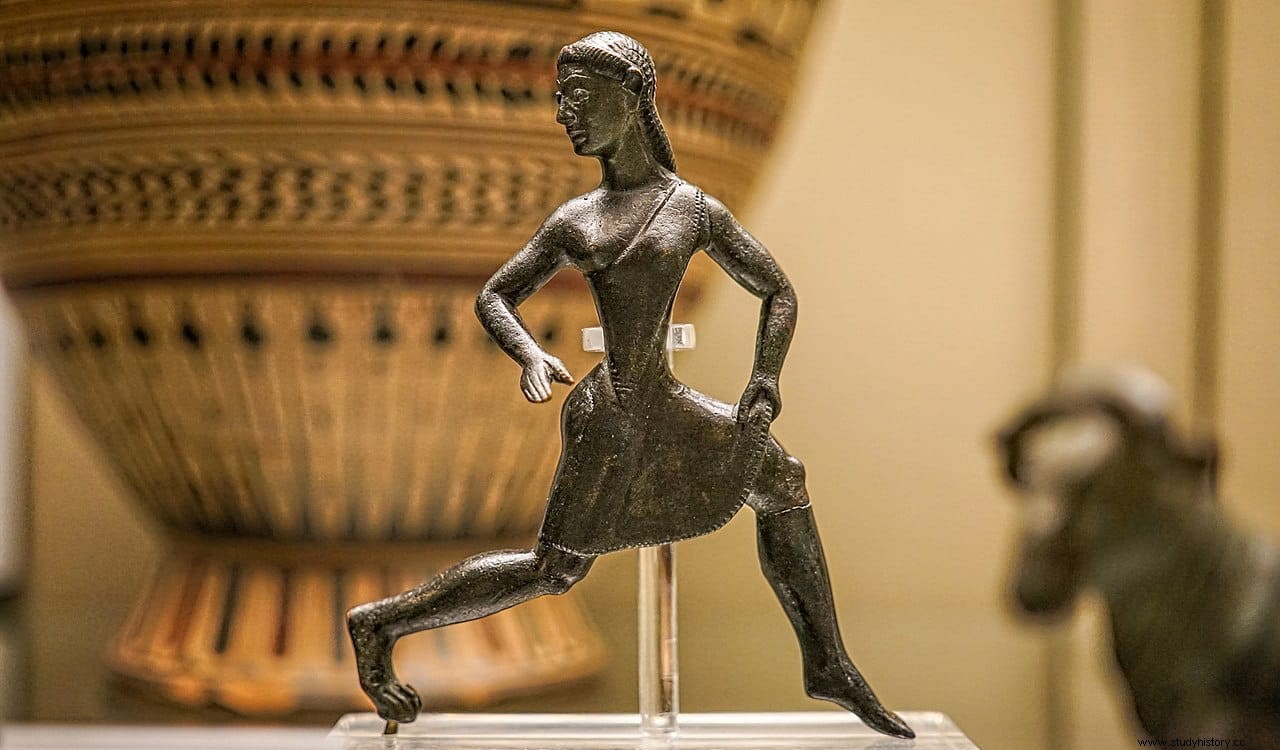It is well known that the participation, even as spectators, of women in the Olympic Games of Antiquity was prohibited. In fact, even in the modern games, women were only gradually incorporated, and decades had to pass before they were admitted to specialties such as athletics, considered counterproductive to their health. But in ancient times a group of 16 women created their own competition:the Hereo Games .
As its name indicates, they were celebrated in honor of the goddess Hera, and were described by Pausanias in his Description of Greece circa 175 AD They are the first female athletic competition of which there are records, held every four years in the Olympia stadium, and probably the first to be held.

However, physical exercise was not alien to women in ancient Greece. In Sparta, female physical education was promoted as a means of improving health in the face of conception, and later in Rome, female athletic competitions were common.
According to Pausanias the Heretic Games they were instituted by Hippodamia, a semi-mythological character, daughter of Oenomaus and wife of Pelops. This Pelops had been dismembered by her father Tantalus, and offered to the gods as food. When they realized the plot, they decided to bring him back to life, replacing the shoulder that Demeter had absentmindedly eaten with one of ivory.
Pelops managed to marry Hippodamia after beating her father in a chariot race, not without tricks, and after 30 suitors died in the attempt. To thank Hera for her marriage Hippodamia gathered a group of 16 women making them administrators of the Hereos Games. An alternative theory for the foundation of the games says that these women came from the Greek cities of Elis (in whose territory Olympia is located) and Pisa, as a way to defuse the tension between the two.

Originally the Hereos Games they consisted only of athletic races. They were celebrated, at least since the 6th century BC , at the Olympia Stadium, possibly the same year as the men's competitions and just before them. The women competed divided into three age groups, and the route was significantly shorter than that of the men, approximately 20 percent shorter. According to Pausanias they did not compete naked like men, but wore a tunic called Chiton or Chiton , which for the occasion was cut above the knees and exposed the entire right shoulder to the chest.
This Chiton was used by men in competitions that required a high physical effort, therefore women actually adopted male clothing.
From the end of the classical period and under the influence of Rome, women were allowed to participate in the same athletic festivals as men, something that was not very well received in Greece. Archaeological evidence exists in inscriptions attesting to female participation in races at Delphi in the 1st century AD, at Naples during the imperial period, and at the Capitoline Games in Rome in 86 AD.
The winners in the Heroic Games were crowned with an olive tree , like the men, and the meat of the cattle sacrificed to Hera was given to them as a prize. They also obtained the right to dedicate statues inscribed with her name, as well as to appear in portraits placed on the columns of the goddess's temple. The marks where these portraits were located can still be seen today. , although none have been preserved. No sculptures with female names have been found in the Olympia excavations either.

There are few references in the sources to women who participated in the Hereian Games. It seems that the Spartans were usually the winners , not only because of the proximity of their city but because their training made them far superior to the rest of Hellas. The only name of a victor that historians have managed to trace is that of Chloris , mythological character granddaughter of Zeus, who is said to have been the first of the winners in the Games.
In the Vatican Museums there is a small bronze sculpture that some identify with Chloris or with a winner of the Hereian Games, because her clothing is very similar to that described by Pausanias. Others think that she is actually a dancer.
